Introduction
In the fast-paced world of construction, the right equipment is crucial for project success, and among the most essential tools is the generator. In Australia, where construction sites vary from urban high-rises to remote outback locations, the choice of a generator significantly impacts the efficiency and continuity of work. This comprehensive guide aims to demystify the process of selecting the best generator for construction sites, catering to both novices and seasoned professionals in the field.
Whether you're powering high-demand tools like circular saws and air compressors or ensuring that your cordless power tools are charged throughout the day, the right generator not only boosts productivity but also enhances safety on site. With a focus on practicality, this article will navigate through the complexities of different generator types, fuel considerations, and the latest technological advancements tailored for the construction industry. We will explore options that fit in the back of a ute for easy transport, discuss fuel types that balance cost with efficiency, and compare the top generator models available in the Australian market.
Understanding that each construction site has unique power needs, our guide will provide you with the knowledge to make an informed decision, ensuring that you choose a generator that not only meets your current requirements but also adapts to future demands. Whether you are dealing with frequent power outages, working in remote locations, or simply looking for a reliable power source for your construction project, this guide will lead you to the right choice.

Essentials of Construction Site Generators in Australia: Understanding What You Need
In the dynamic world of construction, especially on job sites across Australia's diverse landscapes, the right generator is not just a tool, but a cornerstone of efficiency and productivity. Understanding the essentials of construction site generators is vital for anyone in the construction industry, whether dealing with urban developments or remote location projects.
What is a Construction Site Generator?
A construction site generator, be it a large industrial generator, a versatile inverter generator, or a robust diesel generator, serves as an indispensable source of electrical power. It's particularly crucial in scenarios of power failures or when working in areas where the power grid is inaccessible.
Why is it Essential?
Generators are more than just backup power solutions; they are integral to construction work continuity:
- Uninterruptible Power Supply: They provide a consistent power source for construction sites, preventing delays due to power outages.
- Flexibility and Mobility: Portable generators, like the best portable generators available in the market, offer mobility for various job sites, ensuring power is available wherever it's needed.
- Diverse Application: From running heavy-duty tools like circular saws to smaller generators used for lighting and charging cordless tools, generators cater to a wide variety of needs.
Assessing Power Needs for Construction Sites
Selecting the right generator requires a thorough assessment:
- Site Requirements: Consider the total power needs based on the site size and the nature of the construction work.
- Equipment Usage: High-demand tools like table saws and air compressors necessitate generators with higher power output. For sites using a mix of traditional and sensitive electronics, an inverter generator might be the best choice.
- Operational Duration: Many sites operate from early morning to afternoon (e.g., 6.30 am to 2.30 pm), necessitating a generator with sufficient fuel tank capacity or fuel-efficient engine to avoid frequent refueling.
Integration with Modern Tools
Today's construction sites are increasingly using cordless power tools, requiring regular charging. A generator that can efficiently power charging stations, possibly complemented by solar panels for a more sustainable approach, is ideal.
In conclusion, understanding the diverse roles of a construction site generator, from powering heavy machinery to providing energy for smaller tools and charging stations, is crucial in choosing the best generator for your specific needs in the construction industry.
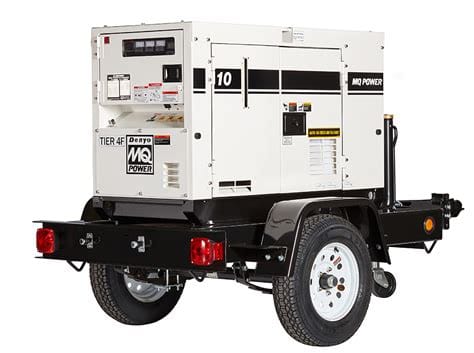
Exploring Generator Types: From Diesel to Standby Generators
Navigating through the various types of generators available in the market is key to finding the one that best suits your construction site's needs. In Australia, the range includes diesel generators, inverter generators, standby generators, solar backup generators and more, each with unique features and advantages.
Diesel Generators: The Powerhouse
What They Are: Diesel generators are known for their durability and high power output, making them ideal for larger sites and heavy-duty applications where a long time under load is expected.
What They Do: These generators efficiently power a wide variety of electrical equipment, from air compressors to electric power tools, even in high-demand situations.
Why They’re Useful: Diesel fuel is often more readily available and can be more cost-effective in remote areas. These generators are a popular option for their longevity and reliability, especially in harsh working conditions. The come in heaps of sizes and run time from small generators to large commercial generators.
Inverter Generators: Versatile and Efficient
What They Are: Inverter generators provide cleaner power, which is crucial for sensitive electronics. They are typically more compact and quieter than traditional generators.
What They Do: Ideal for sites with a mix of heavy tools and technology, they adapt their electrical current output to the precise demand, conserving fuel and reducing emissions.
Why They’re Useful: For sites that use a variety of tools, including sensitive electronics, inverter generators offer the required versatility, making them a good choice for modern construction needs.
Standby Generators: Reliable Backup Power
What They Are: Standby generators are installed permanently and kick in automatically during power failures, providing an uninterrupted power supply.
What They Do: They ensure that construction activities continue seamlessly in the event of unexpected power outages.
Why They’re Useful: Particularly in areas prone to power grid issues or natural disasters, standby generators offer peace of mind with their automatic activation and ability to handle large power loads.
Solar Generators: The Sustainable Choice
What They Are: Solar generators harness solar energy to provide power, making them an environmentally friendly option.
What They Do: These generators are excellent for smaller power needs, such as charging cordless tools, and can be used in conjunction with other generator types for a more sustainable setup.
Why They’re Useful: In remote locations where transporting fuel is challenging, solar generators offer a practical, clean power alternative, aligning with increasing environmental consciousness in the construction industry.
In selecting the right type of generator, consider the specific needs of your construction site, from the type of fuel and power output to environmental factors and the nature of the tools and equipment you use. Understanding these options will guide you towards the best generator for your site.
Fuel Considerations: Practicality, Availability, and Cost for Construction Sites
Choosing the right fuel type for your generator is a crucial decision that affects its practicality, efficiency, and cost-effectiveness on construction sites. In Australia, the common fuel types include diesel, gasoline, natural gas, and solar power, each with its own set of advantages and considerations.
Diesel: The Practical Choice for Heavy-Duty Use
Practicality: Diesel generators are renowned for their efficiency and durability, particularly suited for larger construction sites and heavy equipment. Their ability to run for long hours makes them ideal for the typical 6.30 am to 2.30 pm workday.
Availability: Diesel is readily available and often more affordable in remote areas of Australia, making it a practical choice for construction sites in less accessible locations.
Cost: While diesel generators might have a higher upfront cost, their longevity and fuel efficiency can lead to lower overall costs in the long term.
Gasoline: Versatile and Widely Available
Practicality: Gasoline generators are more portable and suitable for various job sites, especially for smaller tasks or where the generator needs to be moved frequently.
Availability: Gasoline is widely available and can be easily stored in cans, making it a convenient option for sites without immediate fuel access.
Cost: Generally, gasoline generators are less expensive initially but may have higher running costs compared to diesel, especially when used extensively.
Natural Gas: The Clean and Steady Option
Practicality: Natural gas generators are a great fit for construction sites near a natural gas supply. They offer a steady and reliable power source and are especially useful for standby generators.
Availability: While not as portable as diesel or gasoline, natural gas is an excellent option for sites with direct access to a gas line.
Cost: These generators often have lower fuel costs but might involve additional setup for gas line connections, making them more suitable for long-term or permanent sites.
Solar Power: The Eco-Friendly Alternative
Practicality: Solar generators are increasingly popular in Australia, particularly for smaller power needs or in combination with traditional generators. They are ideal for charging cordless tools and running light equipment.
Availability: Solar power is highly accessible in Australia’s sunny climate, making solar generators a viable option even in remote areas.
Cost: The initial investment in solar generators can be higher, but the absence of fuel costs and low maintenance make them cost-effective over time, not to mention their environmental benefits.
When considering fuel types for your generator, assess the practicality, availability, and cost in relation to your specific construction site needs. This evaluation will help you determine the most suitable fuel type, balancing efficiency, convenience, and cost-effectiveness.
Generator Features and Size: Matching to Your Construction Site's Needs
Selecting the right features and size for a generator is crucial in ensuring it meets the specific demands of your construction site. From the generator's size and power output to additional features like fuel tank capacity and electric start, each aspect plays a pivotal role in its suitability for different construction scenarios.
Understanding Generator Size and Power Output
What You Need to Know: The size of the generator you choose directly correlates with its power output. Larger generators are capable of powering more tools simultaneously and are essential for sites with high-demand equipment like table saws and air compressors.
Practical Application: For a construction site operating from 6.30 am to 2.30 pm, it's vital to select a generator that can run continuously throughout this period. This often means choosing a generator with a larger fuel tank or a fuel-efficient engine to avoid the need for refueling during work hours.
Key Features to Consider
- Fuel Tank Capacity: A larger fuel tank means longer run times between refueling, a crucial factor for uninterrupted work, especially in remote areas.
- Electric Start: This feature allows for easy start-up of the generator, a convenient aspect for daily use.
- Portability: For job sites that require moving the generator around, portability becomes a key consideration. Smaller, more portable models may be more suitable for these scenarios.
- Noise Level: In residential or noise-sensitive areas, selecting a generator with a lower noise level is important for compliance with local regulations and occupational safety.
Matching Generator to Power Tool Needs
Considerations for Tool Powering: Modern construction sites often use a combination of high-power and cordless tools. The right generator should be able to handle the load of multiple tools, including the charging needs of cordless equipment. Incorporating solar panels as an additional power source can be an efficient way to supplement the generator's capacity, particularly for charging needs.
The Role of Solar Panels and Battery Setups
With the increasing use of cordless power tools in construction, integrating solar panels and dual battery setups can enhance the efficiency of your power supply system. Solar panels can effectively charge battery setups like 120AH AGM or lithium batteries, providing a sustainable and cost-effective power solution for lighter power needs or as a backup.
In conclusion, the right generator for your construction site should align with your specific power requirements, operational duration, and the nature of the tools used. Understanding these factors will guide you in selecting a generator with the appropriate size, power output, and features to support your construction activities efficiently.
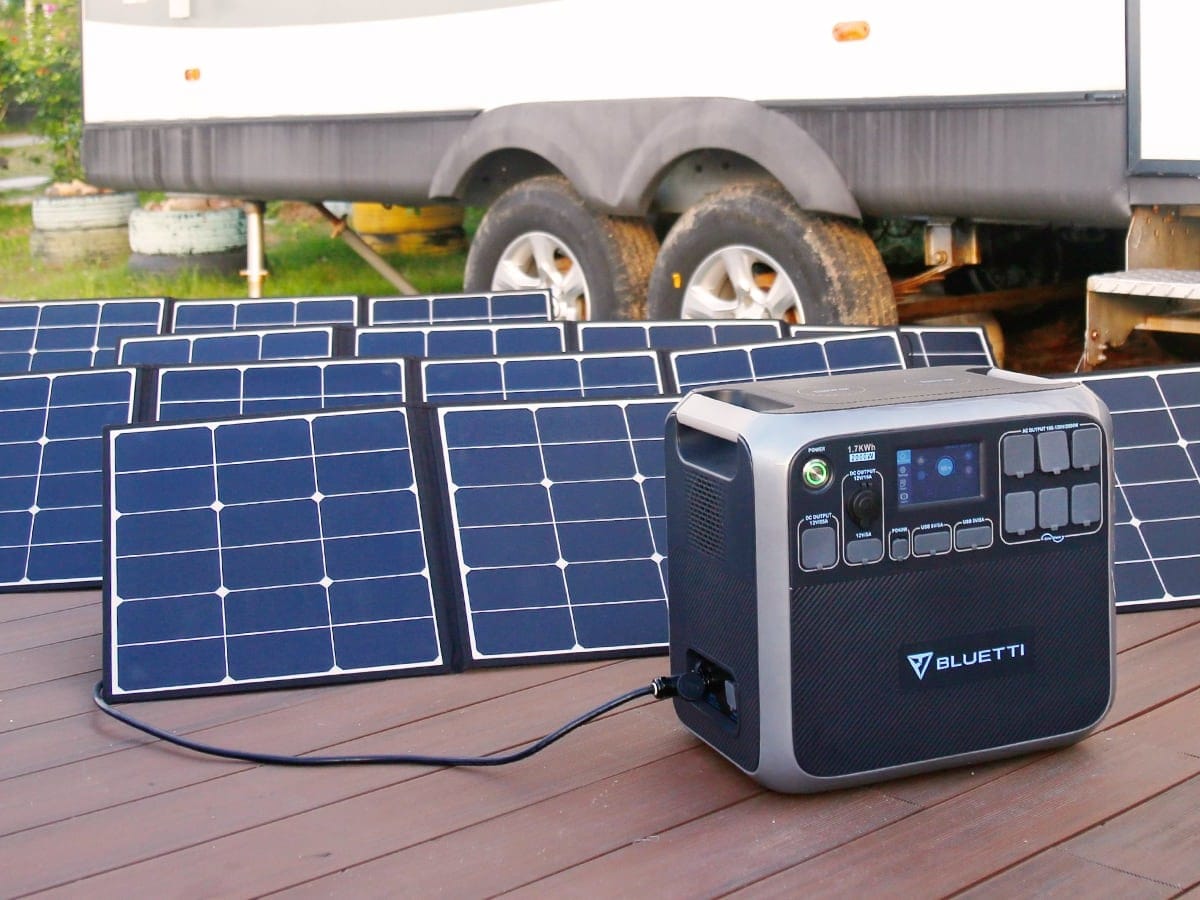
Innovative Power Solutions: Electric/Solar Generators and Dual Battery Setups
The construction industry is increasingly adopting electric/solar generators and dual battery setups, offering eco-friendly and versatile power solutions. However, understanding both the advantages and disadvantages, as well as the costs, is crucial for making an informed decision.
Electric and Solar Generators: Advantages and Challenges
Advantages:
- Environmental Friendliness: Zero emissions make them ideal for sustainable construction projects.
- Quiet Operation: Their minimal noise output suits residential and noise-sensitive areas.
- Portability: Compact and easy to transport, they are excellent for smaller job sites.
Disadvantages:
- Limited Power Capacity: They may not be suitable for heavy-duty power needs or large sites.
- Dependency on Weather: Solar generators rely on sunlight, which can be inconsistent, affecting their reliability.
Costs and Brands:
- Indicative Costs: Electric/solar generators like Bluetti, EcoFlow, and Jackery can range from $500 to over $3000, depending on capacity and features.
- Popular Brands: Notable brands include Bluetti, EcoFlow, Jackery, Goal Zero, and Anker, each offering various models catering to different needs.
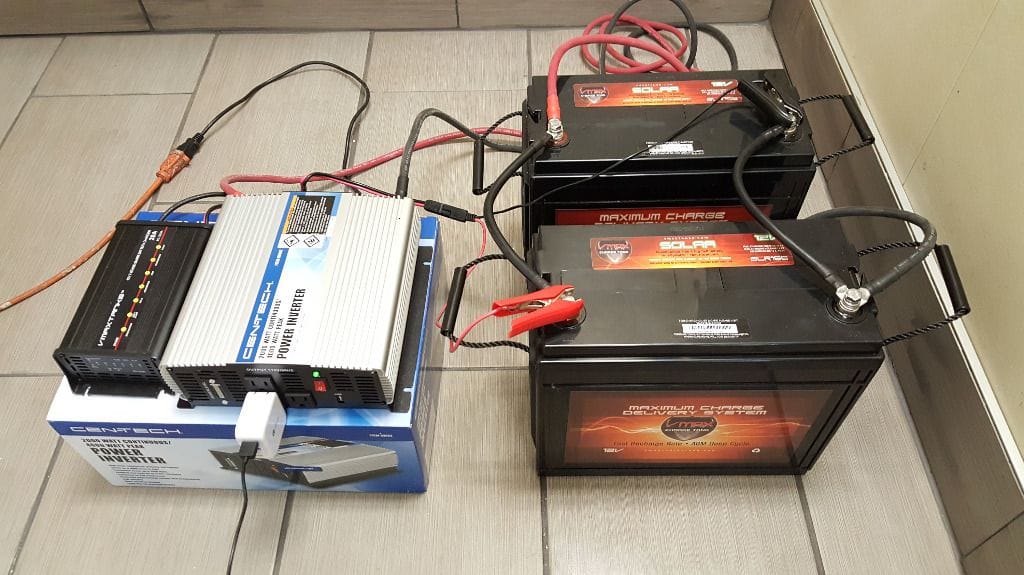
Dual Battery Setups: Versatility with Limitations
Advantages:
- Sustainable Charging: Ideal for keeping tools charged, especially in remote or off-grid locations.
- Backup Power: Provides a reliable backup, especially when paired with solar panels.
Disadvantages:
- Capacity Constraints: May not support larger tools or extensive usage without frequent recharging.
- Initial Setup Complexity: Setting up a dual battery system with solar panels requires technical know-how and initial setup time.
Costs and Considerations:
- Indicative Costs: A dual battery setup, including batteries like 120AH AGM or lithium and solar panels, can cost between $1850 to $3000.
- Maintenance and Longevity: While offering long-term savings, these systems require regular maintenance, and batteries may need replacement over time.
Suitability for Different Construction Scenarios
Electric/solar generators and dual battery setups are excellent for specific construction scenarios, such as smaller sites, remote locations, or as supplemental power sources. However, for larger construction projects with high power demands, traditional generators remain the more practical choice.
Balancing Cost and Benefits
While the initial investment for these innovative solutions can be substantial, the long-term benefits – including reduced fuel costs, minimal maintenance, and environmental sustainability – often justify the expense. It's important for construction professionals to weigh these factors against their specific site requirements and budgets.
Top Generator Brands and Models in Australia: Reviews and Comparisons
When choosing a generator for a construction site, it's essential to consider various factors including power output, weight, and portability. Here's an updated comparison of some top generator models, including larger units with outputs up to 12 kVA.
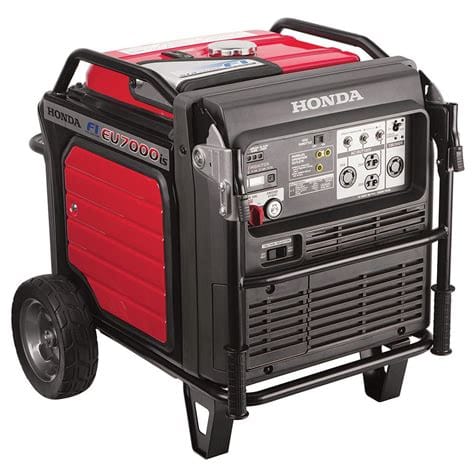
Diesel Generators: Robust and High-Powered
Honda EU 7000iS:
- Power Output: Approximately 5.5 kW (7 kVA).
- Weight: Around 118 kg.
- Portability: Portable but heavy; best for semi-stationary use.
- Pros: Reliable, efficient, good for heavy-duty use, a great addition as a backup generator, honda engine reliability.
- Cons: Higher price point.
- User Feedback: Positive reviews for power and durability.
- Cost: Around $4,500.
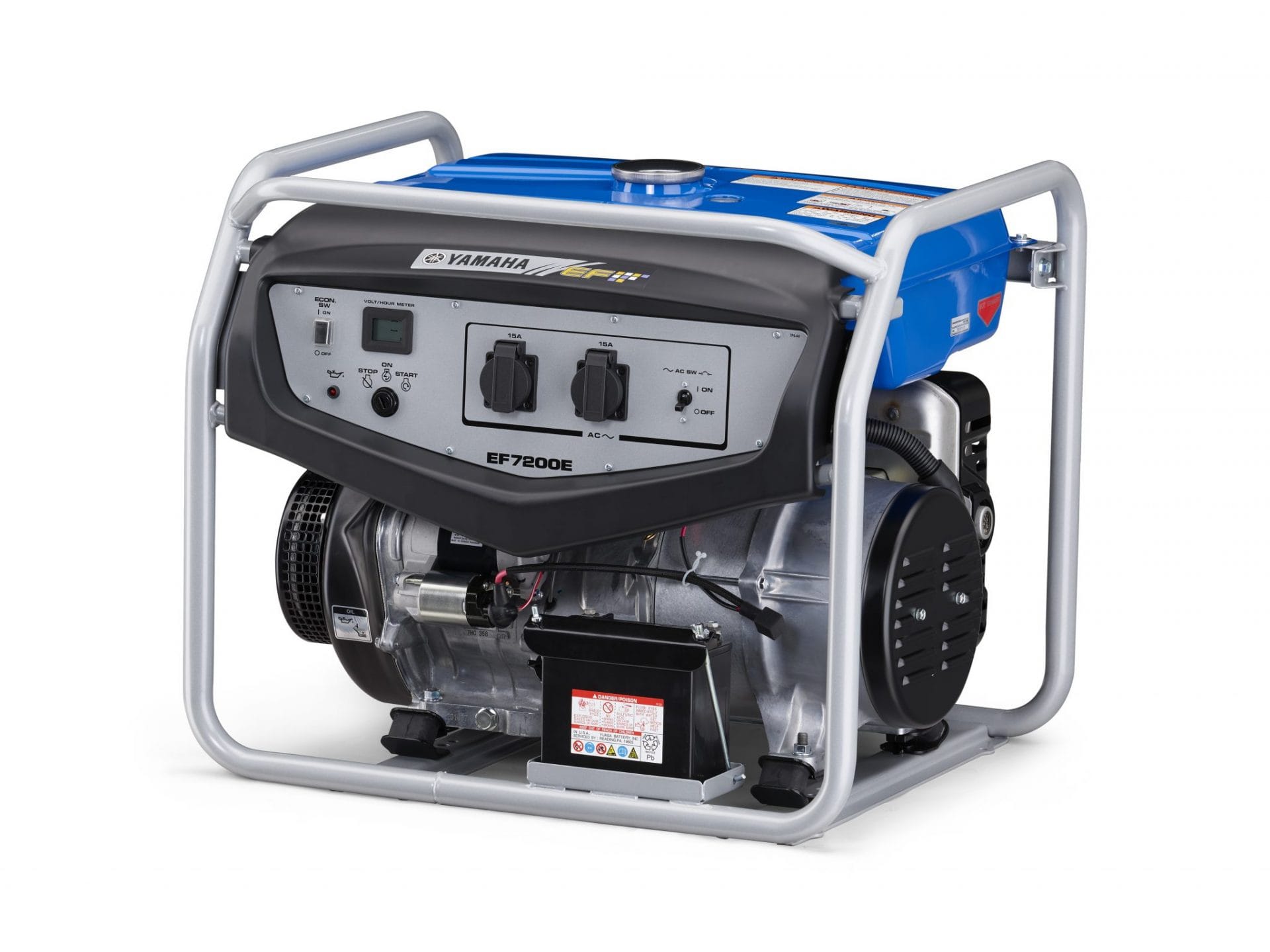
Yamaha EF7200E:
- Power Output: Approximately 6 kW (7.5 kVA).
- Weight: About 93 kg.
- Portability: Moderately portable with wheels.
- Pros: Good balance of power and portability.
- Cons: Less suitable for the highest power demands.
- User Feedback: Praised for reliability and ease of use.
- Cost: Approximately $2,700 AUD
Larger Inverter Generators: Efficient and Cleaner Power

Briggs & Stratton Q6500:
- Power Output: About 5 kW (6.25 kVA).
- Weight: Roughly 64 kg.
- Portability: Designed for portability with a lightweight frame.
- Pros: Quiet operation, fuel-efficient., smaller models.
- Cons: Limited for very high-power tools.
- User Feedback: Favored for medium-sized job sites.
- Cost: Around $4,000 AUD
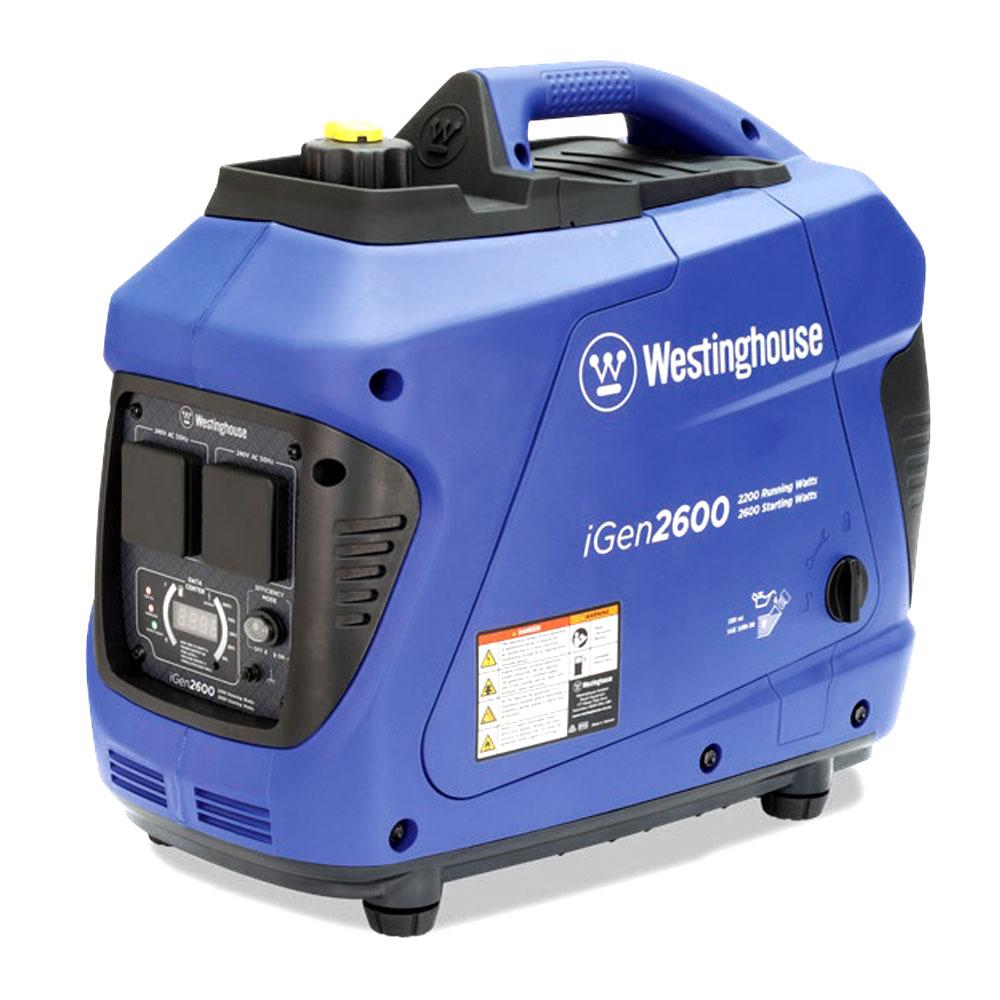
Westinghouse ipGEN2600:
- Power Output: Approximately 2.6 kW (3.25 kVA).
- Weight: About 22.5 kg.
- Portability: Highly portable with compact design.
- Pros: Environmentally friendly, quieter operation, 4 stroke (cause two stokes is never enough!), Petrol fuel, 5.5 hour run time.
- Cons: Not suitable for the largest power tools.
- User Feedback: Positive reviews for small to medium sites.
- Cost: Between $1,500 and $1,800.
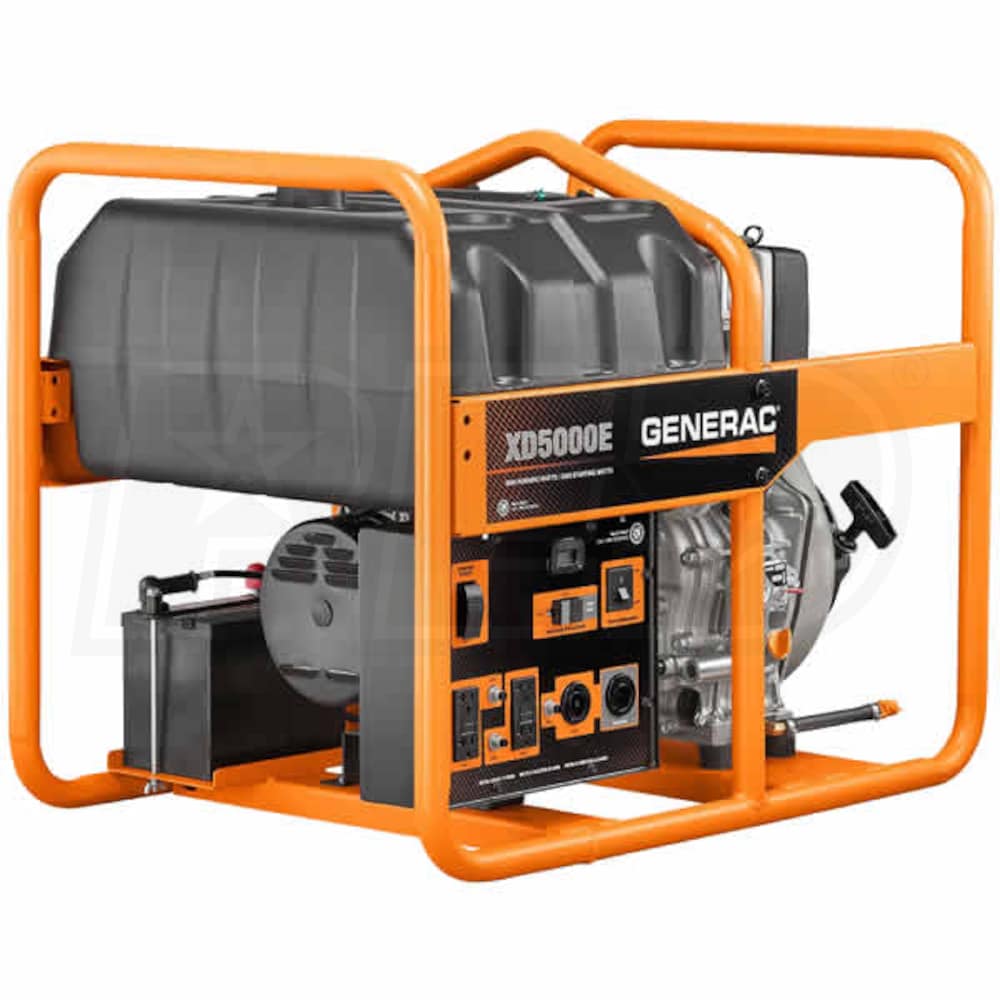
High-Capacity Standby Generators: For Continuous Power
Generac XD5000E:
- Power Output: Approximately 5 kW (6.25 kVA).
- Weight: Around 111 kg.
- Portability: Semi-portable with a heavy-duty frame, heavy, best on a larger site.
- Pros: Durable, ideal for long-term use.
- Cons: Requires space for installation.
- User Feedback: Highly rated for reliability.
- Cost: Approximately $3,700 USD (not sure this is available in Oz)
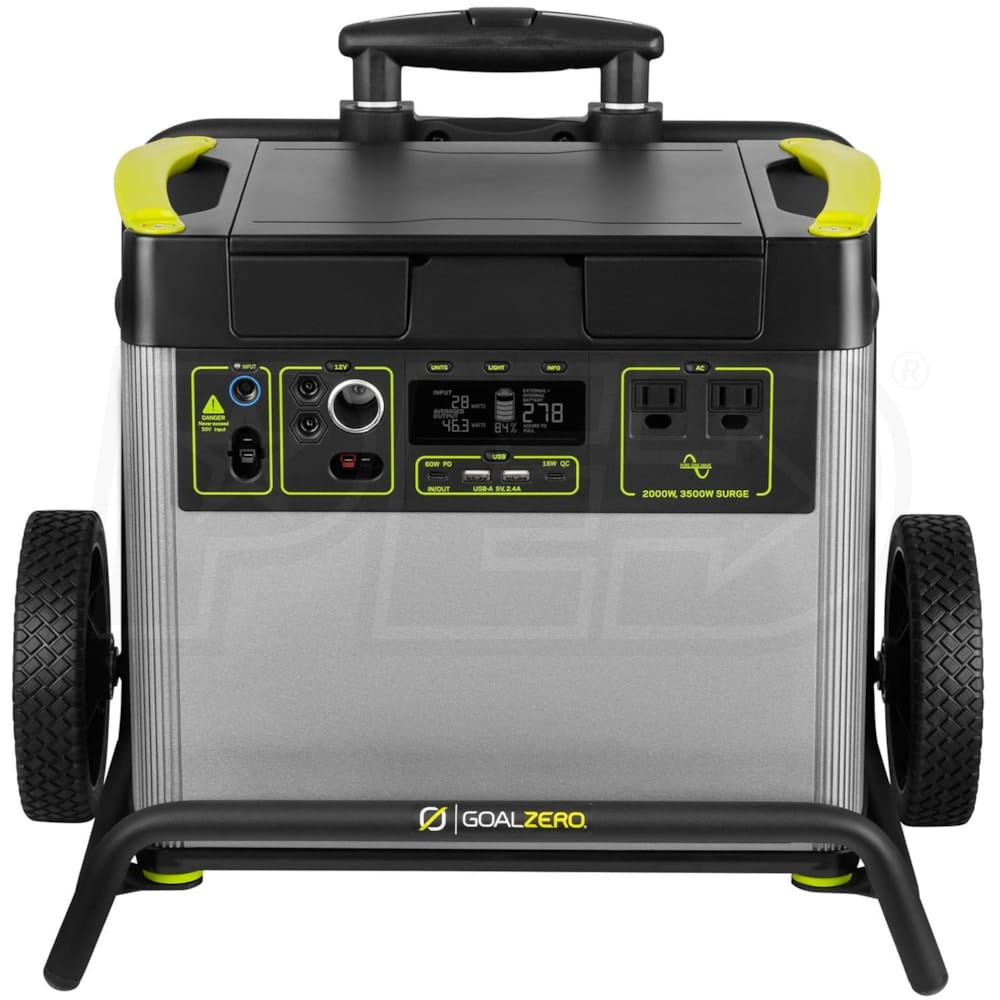
Large Solar Generators: Eco-Friendly and Sustainable
Goal Zero Yeti 3000X:
- Power Output: About 3 kW (3.75 kVA).
- Weight: Approximately 31 kg.
- Portability: Portable with wheels, suitable for light to medium applications.
- Pros: Zero emissions, silent operation.
- Cons: Limited power capacity.
- User Feedback: Well-regarded for eco-friendly power needs.
- Cost: Around $6,500 AUD

Bluetti AC200P:
- Power Output: Around 2 kW (2.5 kVA).
- Weight: About 27 kg.
- Portability: Highly portable and versatile.
- Pros: Large battery capacity, multiple charging options.
- Cons: Not suitable for heavy-duty tools.
- User Feedback: Positive for versatility and capacity.
- Cost: Approximately $4646 AUD
Each generator brand and model has unique features, and the right choice for a construction site depends on specific requirements such as power output, weight considerations, and portability needs.
Practical Considerations: Safety, Maintenance, Setup, and Ergonomics
When incorporating a generator into a construction site, practical considerations extend beyond basic operation to include safety, maintenance, setup, and crucially, ergonomic handling to prevent injuries.
Safety: Ensuring Secure and Healthy Operation
Carbon Monoxide Risks: Always use generators in well-ventilated areas to prevent dangerous gas buildup.
Electrical Safety Measures: Utilize outdoor-rated extension cords and ensure the generator is dry to avoid electrical hazards.
Fire Prevention: Store fuel safely and conduct regular checks for fuel system leaks.
Maintenance: A Cornerstone of Generator Longevity
Routine Inspections: Regularly examine the engine, fuel levels, and electrical systems.
Storage: Keep the generator in a dry place to prevent rust and ensure readiness.
Professional Servicing: Regular servicing by qualified technicians is essential for sustained performance and early problem detection.
Setup: Efficiency and Compliance
Strategic Positioning: Place the generator on stable ground, considering noise and safety implications for workers.
Regulatory Adherence: Comply with local safety and environmental standards in generator operation.
Backup Strategies: Have alternative power solutions ready for unexpected situations. Always consider voltage drop over distance and its effect on connected appliances/tools.
Ergonomics and Movability: Preventing Workplace Injuries
Weight and Portability: Consider the generator’s weight and ease of movement. Heavier models may require equipment like a pickup truck or trolley for transportation to prevent strain injuries.
Safe Handling Practices: Train staff on safe lifting techniques and use of equipment when moving generators. Always prioritize ergonomics to prevent lower back injuries common in construction environments.
Accessible Design: Opt for generators with features that enhance portability, such as handles and wheels, to facilitate safer and easier movement on site.
Incorporating these practical considerations into your decision-making process will not only ensure the efficient operation of your generator but also contribute to a site safety, minimizing the risk of injuries related to the handling and operation of heavy equipment.
Correctly Sizing a Generator: Balancing Power Needs and Efficiency
Understanding Load Demand: It's crucial to choose a generator that matches your site's power requirements. An oversized generator not only incurs unnecessary expense but can also lose efficiency if consistently run under low load. Conversely, an undersized generator may not adequately power your tools, leading to performance issues or equipment damage.
Conducting Basic Load Demand Calculations:
- List Your Tools: Note the wattage of each tool that will be powered by the generator. This is often listed on the tool or in its manual.
- Calculate Total Wattage: Add the wattages of all the tools that might be running simultaneously.
- Add a Margin: It's advisable to add a 20-30% margin to your total to accommodate any power surges or additional unplanned usage.
Example Calculation:
- Suppose you have a circular saw (1500 watts), a table saw (2000 watts), and a few smaller tools (500 watts total) that might run concurrently.
- Total wattage = 1500W + 2000W + 500W = 4000W
- Adding a 25% margin: 4000W * 1.25 = 5000W
- A generator with a power output of around 5 kW would be suitable, like the Briggs & Stratton Q6500, which has a power output of approximately 5 kW and is also ergonomically designed for portability.
By accurately calculating your load demand, you can select a generator that efficiently meets your construction site's needs without the risk of underutilization or overloading.
Future of Generators in Construction: Technological Advancements and Trends
As we look towards the future of construction, it's evident that generator technology is evolving rapidly, driven by advancements in efficiency, environmental concerns, and the ever-changing needs of construction sites.
Embracing Renewable Energy
The construction industry is increasingly turning towards renewable energy sources. Solar generators and dual battery setups are gaining popularity, offering sustainable and cost-effective solutions, especially for smaller power needs or as supplementary systems.
Technological Innovations
Innovations in generator technology are enhancing efficiency and user-friendliness. Features like remote monitoring and control, advanced fuel efficiency, and reduced emissions are becoming more commonplace. These advancements not only improve operational efficiency but also contribute to environmental sustainability.
Adaptation to Diverse Construction Needs
Generators are becoming more adaptable to a variety of construction environments. From urban sites requiring quiet, low-emission generators to remote locations where rugged, high-capacity generators are necessary, the market is evolving to meet these diverse demands.
Predictions for the Construction Industry
Looking forward, we can expect to see a continued focus on eco-friendly power solutions. Solar technology is likely to become more efficient and affordable, making it a more viable option even for larger power demands. Additionally, the integration of smart technologies for monitoring and managing power usage will play a significant role in enhancing efficiency and reducing operational costs.
In conclusion, the future of generators in construction is bright and promising, with technological advancements paving the way for more efficient, sustainable, and adaptable power solutions. As these trends continue to evolve, they will undoubtedly shape the way power is managed on construction sites, making them more efficient and environmentally friendly.
Frequently Asked Questions (FAQs) About Generators for Construction Sites
- What size generator do I need for my construction site?
- To determine the right size, calculate the total wattage of all tools and equipment you plan to run simultaneously, then add a 20-30% buffer to account for any power surges or additional tools.
- How do I maintain my construction site generator?
- Regular maintenance includes checking oil and fuel levels, inspecting the engine and electrical components, and ensuring the generator is stored in a clean, dry place. Annual servicing by a professional is also recommended.
- Can I use a solar generator for my construction site?
- Yes, solar generators are suitable for smaller power needs or as a supplemental power source. They are particularly useful for charging cordless tools or for sites with lighter power requirements.
- What are the benefits of using an inverter generator on a construction site?
- Inverter generators provide cleaner, more stable power, which is important for sensitive electronics. They are also more fuel-efficient and operate quieter than traditional generators.
- Is it safe to use a generator in wet conditions?
- Generators should be kept dry and operated in well-ventilated areas. Using a generator in wet conditions can pose serious safety risks, including electrocution.
- How can I ensure safe operation of my generator to prevent accidents?
- Always operate the generator in a well-ventilated area to avoid carbon monoxide poisoning, keep it dry, use appropriate extension cords, and store fuel safely. Also, adhere to the manufacturer's instructions for safe operation.
- What should I do if my generator isn’t providing enough power for all my tools?
- If your generator isn’t providing enough power, you may need to upgrade to a model with a higher power output. Ensure that you’ve correctly calculated your power needs before purchasing a new generator.
Conclusion: Empowering Your Construction Site with the Right Generator
Selecting the right generator is a important decision that significantly impacts the efficiency and success of any construction project your working on. Throughout this guide, we've explored various aspects of generators – from understanding different types, assessing power needs, considering fuel options, to focusing on practical considerations like safety, maintenance, and ergonomics.
The future of construction site power lies in technological advancements, with a shift towards more sustainable, efficient, and user-friendly solutions. Whether it's a robust diesel generator for heavy-duty needs, a versatile inverter generator, or an eco-friendly solar option, the key is to choose a solution that aligns with your specific site requirements.
Remember, the right generator not only provides a reliable power source but also enhances the overall productivity and safety of your site. By carefully considering your needs and the options available, you can ensure that your construction site operates at its best, regardless of the challenges it may face.
We hope this guide has equipped you with the knowledge and confidence to choose the best generator for your construction site needs, setting the foundation for a successful and efficient project.







